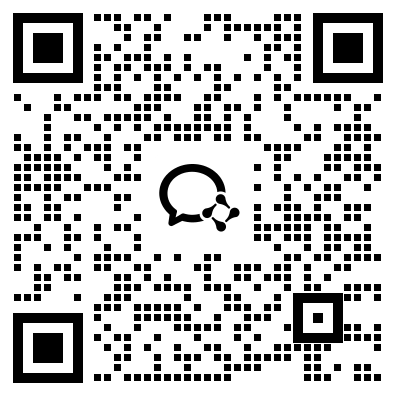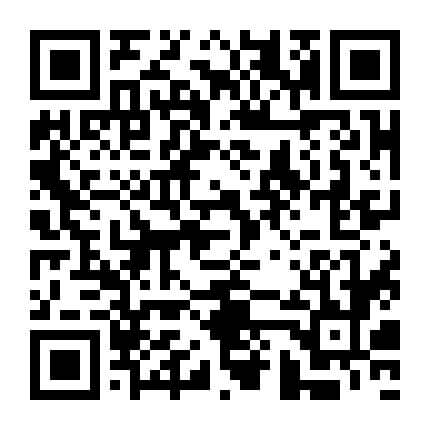考研201英语(一)在线题库每日一练(七)
摘要:以下是希赛网给大家分享考研201英语(一)在线题库每日一练,希望通过刷题可以帮助大家巩固重要知识点,对知识点查漏补缺,祝愿大家能顺利通过考试!
本文提供考研201英语(一)在线题库每日一练,以下为具体内容
1、All around the world, lawyers generate more hostility than the members of any other profession— with the possible exception of journalism. But there are few places where clients have more grounds for complaint than America.During the decade before the economic crisis, spending on legal services in America grew twice as fast as inflation. The best lawyers made skyscrapers-full of money, tempting ever more students to pile into law schools. But most law graduates never get a big-firm job. Many of them instead become the kind of nuisance-lawsuit filer that makes the tort system a costly nightmare.There are many reasons for this. One is the excessive costs of a legal education. There is just one path for a lawyer in most American states: a four-year undergraduate degree in some unrelated subject, then a three-year law degree at one of 200 law schools authorized by the American Bar Association and an expensive preparation for the bar exam. This leaves today's average law-school graduate with $100,000 of debt on top of undergraduate debts. Law-school debt means that they have to work fearsomely hard.Reforming the system would help both lawyers and their customers. Sensible ideas have been around for a long time, but the state-level bodies that govern the profession have been too conservative to implement them. One idea is to allow people to study law as an undergraduate degree. Another is to let students sit for the bar after only two years of law school. If the bar exam is truly a stern enough test for a would-be lawyer, those who can sit it earlier should be allowed to do so. Students who do not need the extra training could cut their debt mountain by a third.The other reason why costs are so high is the restrictive guild-like ownership structure of the business. Except in the District of Columbia, non-lawyers may not own any share of a law firm. This keeps fees high and innovation slow. There is pressure for change from within the profession, but opponents of change among the regulators insist that keeping outsiders out of a law firm isolates lawyers from the pressure to make money rather than serve clients ethically.In fact, allowing non-lawyers to own shares in law firms would reduce costs and improve services to customers, by encouraging law firms to use technology and to employ professional managers to focus on improving firms' efficiency. After all, other countries, such as Australia and Britain, have started liberalizing their legal professions. America should follow. 1.A lot of students take up law as their profession due to( ).2.Which of the following adds to the costs of legal education in most American states?3.Hindrance to the reform of the legal system originates from ( ). 4.The guild-like ownership structure is considered “restrictive” partly because it ( ). 5.In this text, the author mainly discusses( ).
问题1
A、the growing demand from clients
B、the increasing pressure of inflation
C、the prospect of working in big firms
D、the attraction of financial rewards
问题2
A、Higher tuition fees for undergraduate studies.
B、Pursuing a bachelor's degree in another major.
C、Admissions approval from the bar association.
D、Receiving training by professional associations.
问题3
A、non-professionals' sharp criticism
B、lawyers' and clients' strong resistance
C、the rigid bodies governing the profession
D、the stem exam for would-be lawyers
问题4
A、prevents lawyers from gaining due profits
B、keeps lawyers from holding law-firm shares
C、aggravates the ethical situation in the trade
D、bans outsiders' involvement in the profession
问题5
A、flawed ownership of America's law firms and its causes
B、the factors that help make a successful lawyer in America
C、a problem in America's legal profession and solutions to it
D、the role of undergraduate studies in America's legal education
2、Just how much does the Constitution protect your digital data? The Supreme Court will now consider whether police can search the contents of a mobile phone without a warrant if the phone is on or around a person during an arrest. California has asked the justices to refrain from a sweeping ruling, particularly one that upsets the old assumptions that authorities may search through the possessions of suspects at the time of their arrest. It is hard, the state argues, for judges to assess the implications of new and rapidly changing technologies. The court would be recklessly modest if it followed California's advice. Enough of the implications are discernable, even obvious, so that the justice can and should provide updated guidelines to police, lawyers and defendants. They should start by discarding California's lame argument that exploring the contents of a smart phone—a vast storehouse of digital information—is similar to say, going through a suspect's purse. The court has ruled that police don't violate the Fourth Amendment when they go through the wallet or pocketbook, of an arrestee without a warrant. But exploring one's smartphone is more like entering his or her home. A smartphone may contain an arrestee's reading history, financial history, medical history and comprehensive records of recent correspondence. The development of “cloud computing,” meanwhile, has made that exploration so much the easier. Americans should take steps to protect their digital privacy. But keeping sensitive information on these devices is increasingly a requirement of normal life. Citizens still have a right to expect private documents to remain private and protected by the Constitution's prohibition on unreasonable searches.As so often is the case, stating that principle doesn't ease the challenge of line-drawing. In many cases, it would not be overly burdensome for authorities to obtain a warrant to search through phone contents. They could still invalidate Fourth Amendment protections when facing severe, urgent circumstances, and they could take reasonable measures to ensure that phone data are not erased or altered while waiting for a warrant. The court, though, may want to allow room for police to cite situations where they are entitled to more freedom. But the justices should not swallow California's argument whole. New, disruptive technology sometimes demands novel applications of the Constitution's protections. Orin Kerr, a law professor, compares the explosion and accessibility of digital information in the 21st century with the establishment of automobile use as a digital necessity of life in the 20th: The justices had to specify novel rules for the new personal domain of the passenger car then; they must sort out how the Fourth Amendment applies to digital information now. 1.The Supreme Court will work out whether, during an arrest, it is legitimate to( ).2.The author's attitude toward California's argument is one of ( ). 3.The author believes that exploring one's phone contents is comparable to ( ). 4.In Paragraphs 5 and 6, the author shows his concern that ( ). 5.Orin Kerr's comparison is quoted to indicate that( ).
问题1
A、search for suspects' mobile phones without a warrant
B、check suspects' phone contents without being authorized
C、prevent suspects from deleting their phone contents
D、prohibit suspects from using their mobile phones
问题2
A、tolerance
B、indifference
C、disapproval
D、cautiousness
问题3
A、getting into one's residence
B、handling one's historical records
C、scanning one's correspondences
D、going through one's wallet
问题4
A、principles are hard to be clearly expressed
B、the court is giving police less room for action
C、phones are used to store sensitive information
D、citizens, privacy is not effectively protected
问题5
A、the Constitution should be implemented flexibly
B、new technology requires reinterpretation of the Constitution
C、California's argument violates principles of the Constitution
D、principles of the Constitution should never be altered
3、The journal Science is adding an extra round of statistical checks to its peer-review process, editor-in-chief Marcia McNutt announced today. The policy follows similar efforts from other journals, after widespread concern that basic mistakes in data analysis are contributing to the irreproducibility of many published research findings. “Readers must have confidence in the conclusions published in our journal,” writes McNutt in an editorial. Working with the American Statistical Association, the journal has appointed seven experts to a statistics board of reviewing editors (SBoRE). Manuscript will be flagged up for additional scrutiny by the journal's internal editors, or by its existing Board of Reviewing Editors or by outside peer reviewers. The SBoRE panel will then find external statisticians to review these manuscripts. Asked whether any particular papers had impelled the change, McNutt said: “The creation of the ‘statistics board’ was motivated by concerns broadly with the application of statistics and data analysis in scientific research and is part of Science's overall drive to increase reproducibility in the research we publish.” Giovanni Parmigiani, a biostatistician at the Harvard School of Public Health, a member of the SBoRE group, says he expects the board to “play primarily an advisory role.” He agreed to join because he “found the foresight behind the establishment of the SBoRE to be novel, unique and likely to have a lasting impact. This impact will not only be through the publications in Science itself, but hopefully through a larger group of publishing places that may want to model their approach after Science.”John Ioannidis, a physician who studies research methodology, says that the policy is “a most welcome step forward” and “long overdue.”“Most journals are weak in statistical review, and this damages the quality of what they publish. I think that, for the majority of scientific papers nowadays, statistical review is more essential than expert review,” he says. But he noted that biomedical journals such as Annals of Internal Medicine, the Journal of the American Medical Association and The Lancet pay strong attention to statistical review.Professional scientists are expected to know how to analyze data, but statistical errors are alarmingly common in published research, according to David Vaux, a cell biologist. Researchers should improve their standards, he wrote in 2012, but journals should also take a tougher line, “engaging reviewers who are statistically literate and editors who can verify the process.” Vaux says that Science's idea to pass some papers to statisticians “has some merit, but a weakness is that it relies on the board of reviewing editors to identify ‘the papers that need scrutiny’ in the first place.”1.It can be learned from Paragraph 1 that( ).2.The phrase “flagged up” (Paragraph 2) is the closest in meaning to ( ). 3.Giovanni Parmigiani believes that the establishment of the SBoRE may ( ). 4.David Vaux holds that what Science is doing now ( ). 5.Which of the following is the best title of the text?
问题1
A、science intends to simplify its peer-review process
B、journals are strengthening their statistical checks
C、few journals are blamed for mistakes in data analysis
D、lack of data analysis is common in research projects
问题2
A、found
B、revised
C、marked
D、stored
问题3
A、pose a threat to all its peers
B、meet with strong opposition
C、increase Science's circulation
D、set an example for other journals
问题4
A、adds to researchers' workload
B、diminishes the role of reviewers
C、has room for further improvement
D、is to fail in the foreseeable future
问题5
A、Science Joins Push to Screen Statistics in Papers.
B、Professional Statisticians Deserve More Respect.
C、Data Analysis Finds Its Way onto Editors' Desks.
D、Statisticians Are Coming Back with Science.
4、In Cambodia, the choice of a spouse is a complex one for the young male. It may involve not only his parents and his friends,(1)those of the young woman, but also a matchmaker. A young man can(2) a likely spouse on his own and then ask his parents to (3)the marriage negotiations, or the young man's parents may make the choice of a spouse, giving the child little to say in the selection. (4), a girl may veto the spouse her parents have chosen. (5)a spouse has been selected, each family investigates the other to make sure its child is marrying(6)a good family.The traditional wedding is a long and colorful affair. Formerly it lasted three days, (7)by the 1980s it more commonly lasted a day and a half. Buddhist priests offer a short sermon and (8) prayers of blessing. Parts of the ceremony involve ritual hair cutting, (9)cotton threads soaked in holy water around the bride's and groom's wrists, and (10)a candle around a circle of happily married and respected couples to bless the (11). Newlyweds traditionally move in with the wife's parents and may(12)with them up to a year,(13)they can build a new house nearby.Divorce is legal and easy to (14), but not common. Divorced persons are (15)with some disapproval. Each spouse retains(16)property he or she(17)into the marriage, and jointly-acquired property is(18)equally. Divorced persons may remarry, but a gender prejudice (19)up: The divorced male doesn't have a waiting period before he can remarry(20)the woman must wait ten months.
问题1
A、by way of
B、as well as
C、on behalf of
D、with regard to
问题2
A、adapt to
B、provide for
C、compete with
D、decide on
问题3
A、close
B、renew
C、arrange
D、postpone
问题4
A、In theory
B、Above all
C、In time
D、For example
问题5
A、Although
B、Lest
C、After
D、Unless
问题6
A、into
B、within
C、from
D、through
问题7
A、since
B、or
C、but
D、so
问题8
A、test
B、copy
C、recite
D、create
问题9
A、folding
B、piling
C、wrapping
D、tying
问题10
A、lighting
B、passing
C、hiding
D、serving
问题11
A、meeting
B、association
C、collection
D、union
问题12
A、grow
B、part
C、deal
D、live
问题13
A、whereas
B、until
C、for
D、if
问题14
A、obtain
B、follow
C、challenge
D、avoid
问题15
A、isolated
B、persuaded
C、viewed
D、exposed
问题16
A、wherever
B、however
C、whenever
D、whatever
问题17
A、changed
B、brought
C、shaped
D、pushed
问题18
A、divided
B、invested
C、donated
D、withdrawn
问题19
A、clears
B、warms
C、shows
D、breaks
问题20
A、while
B、so that
C、once
D、in that
5、France, which prides itself as the global innovator of fashion, has decided its fashion industry has lost an absolute right to define physical beauty for women. Its lawmakers gave preliminary approval last week to a law that would make it a crime to employ ultra-thin models on runways. The parliament also agreed to ban websites that “incite excessive thinness” by promoting extreme dieting. Such measures have a couple of uplifting motives. They suggest beauty should not be defined by looks that end up impinging on health. That's a start. And the ban on ultra-thin models seems to go beyond protecting models from starving themselves to death—as some have done. It tells the fashion industry that it must take responsibility for the signal it sends women, especially teenage girls, about the social tape-measure they must use to determine their individual worth. The bans, if fully enforced, would suggest to women (and many men) that they should not let others be arbiters of their beauty. And perhaps faintly, they hint that people should look to intangible qualities like character and intellect rather than dieting their way to size zero or wasp-waist physiques. The French measures, however, rely too much on severe punishment to change a culture that still regards beauty as skin-deep—and bone-showing. Under the law, using a fashion model that does not meet a government-defined index of body mass could result in a $85,000 fine and six months in prison. The fashion industry knows it has an inherent problem in focusing on material adornment and idealized body types. In Denmark, the United States, and a few other countries, it is trying to set voluntary standards for models and fashion images that rely more on peer pressure for enforcement. In contrast to France's actions, Denmark's fashion industry agreed last month on rules and sanctions regarding the age, health, and other characteristics of models. The newly revised Danish Fashion Ethical Charter clearly states: “We are aware of and take responsibility for the impact the fashion industry has on body ideals, especially on young people.” The charter's main tool of enforcement is to deny access for designers and modeling agencies to Copenhagen Fashion Week (CFW), which is run by the Danish Fashion Institute. But in general it relies on a name-and-shame method of compliance. Relying on ethical persuasion rather than law to address the misuse of body ideals may be the best step. Even better would be to help elevate notions of beauty beyond the material standards of a particular industry. 1.According to the first paragraph, what would happen in France?2.The phrase “impinging on” (Paragraph 2) is closest in meaning to( ).3.Which of the following is true of the fashion industry?4.A designer is most likely to be rejected by CFW for( ). 5.Which of the following may be the best title of the text?
问题1
A、Physical beauty would be redefined.
B、New runways would be constructed.
C、Websites about dieting would thrive.
D、The fashion industry would decline.
问题2
A、indicating the state of
B、heightening the value of
C、losing faith in
D、doing harm to
问题3
A、The French measures have already failed.
B、New standards are being set in Denmark.
C、Models are no longer under peer pressure.
D、Its inherent problems are getting worse.
问题4
A、pursuing perfect physical conditions
B、caring too much about models' character
C、showing little concern for health factors
D、setting a high age threshold for models
问题5
A、A Challenge to the Fashion Industry's Body Ideals.
B、A Dilemma for the Starving Models in France.
C、Just Another Round of Struggle for Beauty.
D、The Great Threats to the Fashion Industry.
延伸阅读
- 历年考研国家分数线汇总(更新至2025年)
- 2025考研国家分数线正式发布
- 2025全国各省考研初试成绩公布时间汇总(更新中)
- 2025年考研成绩公布时间及查询流程
- 2025年全国硕士研究生招生考试(初试)温馨提示汇总
- 2025年全国硕士研究生招生考试考场规则

考研微信公众号

考研备考资料免费领取
去领取
- 1
- 1
- 6
 专注在线职业教育24年
专注在线职业教育24年









 扫描二维码
扫描二维码
 扫描二维码
扫描二维码








